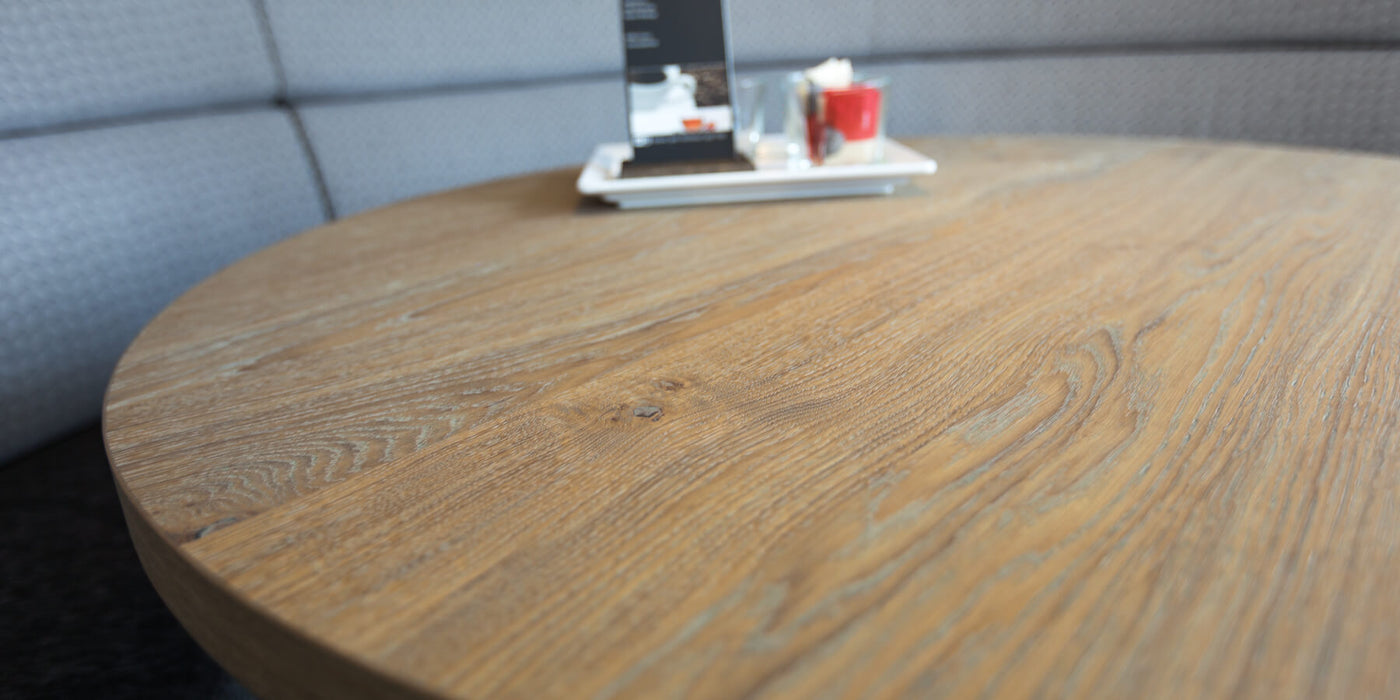You may think that a scratch is a scratch and depending on how deep it goes into the finish, that is how visible it will be. While it is true that the depth of a scratch will affect how visible that scratch is, there is another piece to the puzzle that will affect the visibility of the scratch.
The sheen of the wood finish on your hardwood floor, table or furniture will impact the visibility of scratches.
If you understand how sheen works, it may be clicking in your brain already. If not, we recommend reading about different wood finish sheens and then finishing this blog post.
Scratching
Causes
Obviously, scratches can be caused by many different things. Pet nails, grit under your shoes and sliding abrasive or sharp objects carelessly over a finished wood surface are just a few common causes of scratching.
As much as it would be nice to never have to worry about it, for surfaces that are regularly used, scratching is inevitable. High traffic areas like hardwood flooring, tables, and furniture are the most susceptible to being scratched.
Hardness of wood
The hardness of wood is measured by the janka hardness scale. For woods lower on the janka hardness scale, scratches may become more exacerbated by the wood's indentation. For example, a dog's nails can potentially scratch not only the surface finish, but also crush the wood fibers or “dent” the wood itself.
The impact of wood finish sheen on scratches
The higher the wood finish sheen, the more noticeable similar scratches will be. Conversely, the lower the sheen, the easier it is to hide scratches.
A high sheen finish requires more build and offers more light deflection. When the surface becomes scratched, light deflects more intensely and accents the scratch.
A low sheen finish is designed to deflect light in many directions, meaning when a scratch occurs, the finish is already working at making that scratch as minimally visible as possible.
Look at the affect of sheen on scratches in the image below.

Jagged, fine, and blunt scratches shown on gloss, semi-gloss, satin and matte wood finish.
NOTE: Scratching was done by hand so slight variations in pressure were inevitable.
Here is another photo of the entire board.

L to R: Matte, satin, semi-gloss and gloss scratches on white oak flooring.
Repair
It is worth noting that higher sheen wood finishes are also more difficult to repair. The repair process requires extensive sanding and finishing expertise. It is ideal to perform the repair process off-site in a favorable environment. This is not always possible, as is the case for flooring, and the repair must be performed on-site. This opens the door to inconvenient dust and the potential for surface contamination depending on the wood finish you are using.
Choosing a suitable wood finish sheen
Select a lower sheen wood finish. The lower the sheen, the lower the likelihood is that scratches will be very noticeable. The other thing that helps is to select a softer wood finish (not as hard as a polyurethane) without a thick film build so that scratching is less likely to occur.
Rubio Monocoat Oil Plus 2C is a softer wood finish (it gives with deformation of a wood surface). Any minor scratches that occur do not show with the same whitish look as with a harder polyurethane wood finish.
Oil Plus 2C also does not leave a thick film as with a polyurethane wood finish. It, therefore, does not show scratches or indentations of the wood finish and surface as pronounced as on a floor finished with polyurethane.
Even when minor scratches develop on a wood surface finished with Oil Plus 2C, they are easier and more convenient to repair than a surface with a traditional polyurethane finish on it.
Often you can rub a little oil in the scratched wood surface and wipe it clean for a perfect repair. It becomes hard to detect once the oil has dried and is achieved without the inconvenience and difficulty associated with scratch repairs on a traditional polyurethane wood finish!
We hope this helps you select a wood finish that provides the benefit of showing fewer scratches in a finished wood surface and allowing easy repairs when they occur.
